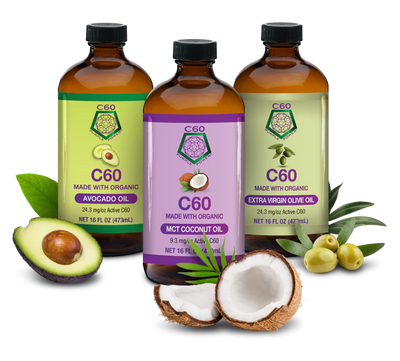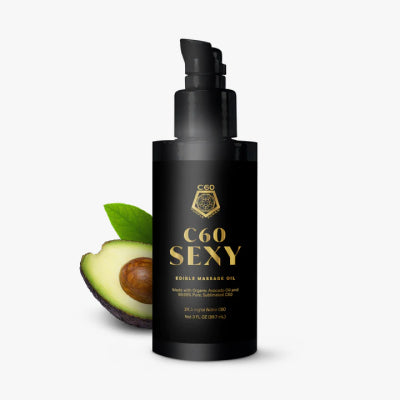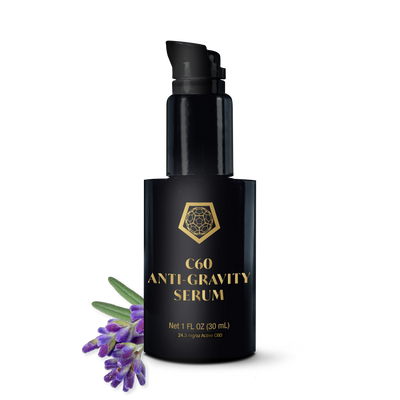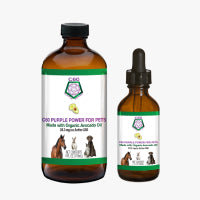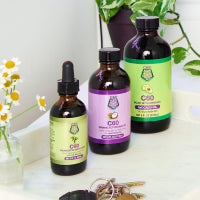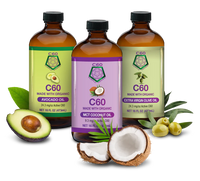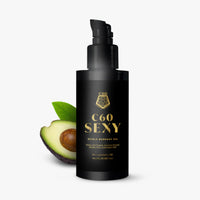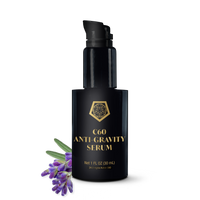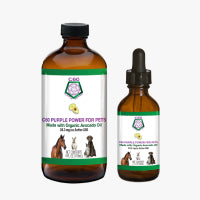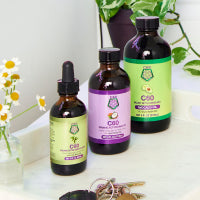Learn easy and accessible ways to slow or address free radical damage
Free radicals are independent atoms with one or more unpaired electrons, making them highly reactive and unstable molecules. 1, 2
These atoms are on a relentless quest to find a partner and steal an electron, causing cellular damage along the way. As soon as one free radical steals an electron, the affected molecule becomes a free radical itself, perpetuating a vicious cycle. 1, 2
This is where antioxidants come in - trusty little molecules tasked with fighting off free radicals and restoring balance. When free radicals outnumber antioxidants, oxidative stress may occur, potentially contributing to a range of adverse health conditions, from premature aging to chronic health conditions. 1, 2
In this blog we answer your questions about free radicals:
- What are free radicals?
- Where do free radicals come from?
- What effects can free radicals have on my health and well-being?
- How can I slow or address free radical damage?
What are Free Radicals?
Free radicals are independent atoms with one or more unpaired electrons. These atoms are smart and know they need to replace their missing electron to remain stable. 1, 2
The best way to do this is by binding to another atom or molecule and stealing an electron. To find a partner atom or molecule, free radicals follow an unpredictable path through your cells, causing cellular damage along the way. 1, 2
As soon as one free radical steals an electron, that host molecule now becomes an unstable free radical who is on the lookout for an electron to steal. This cycle needs to be broken. 1, 2
And this is why our friends, the antioxidants, are so popular. Antioxidants are trusty little molecules tasked with fighting off free radicals and putting a stop to free radical damage. 1, 2
When there is an imbalance between free radicals and antioxidants, chaos happens. This chaos, or oxidative stress can lead to a range of side effects including cellular damage, disease, premature aging, and changes to your DNA. 1, 2, 3
Where do Free Radicals Come From?
Free radicals come from two primary sources: your body and environment. 2
In your body, free radicals are by-products of normal cellular processes. For example, when food is metabolized into energy, free radicals are created. And not all free radicals are a bad thing, your immune system uses free radicals to help defend against infections, and during exercise your body produces free radicals. This free radical production helps train or build your body’s natural free radical tolerance. 4, 5
Environmental and lifestyle sources of free radicals include: 2, 4, 5, 6
- Cigarette smoke
- Pollution
- UV rays
- Toxins and chemicals
- Radiation
- Some medications
- Radon
- Exercise
How Do Free Radicals Impact the Body?
The primary and wide-reaching impact of excess free radicals in your body is oxidative stress.
When a free radical steals electrons from a molecule, the function and structure of the molecule is altered, causing cellular damage. This creates the cycle we mentioned above with the affected molecule becoming a free radical – ultimately leading to an imbalance between free radicals and antioxidants in your body – creating oxidative stress. 1, 2
Antioxidants are special molecules that give free radicals the extra electron they need without risk of themselves becoming a free radical. Antioxidants are often called free radical scavengers or sponges because they help stabilize free radicals. 3, 4
When you’re in long-term or chronic oxidative stress, free radicals can damage your DNA, fatty tissues, and proteins. This damage may contribute to the development of adverse health conditions, including: 3, 7, 8, 9
-
Cardiovascular conditions including atherosclerosis, hypertension, ischemia, heart failure, and cardiomyopathy
-
Neurological conditions including Parkinson’s disease, Alzheimer’s disease, depression, multiple sclerosis, ALS, and memory loss
-
Respiratory and lung conditions including asthma, chronic bronchitis, and chronic obstructive pulmonary disease
-
Joint health conditions including rheumatoid arthritis
-
Kidney conditions including glomerulonephritis, diabetes progression, and chronic renal failure
-
Eye conditions including cataracts and adverse retinal health
-
Organ health conditions including cancer, aging, and inflammatory conditions
How to Slow or Address Free Radical Damage
To slow or address free radical damage, we want you to focus on antioxidants. You want to make sure you’ve got plenty of these free radical scavengers available to work for you at all times.
The great news is that these nutrients are antioxidants: 10
- Vitamins C and E
- Carotenoids including beta-carotene and lycopene
- Selenium
- Zinc
- Flavonoids including quercetin, catechins, resveratrol, coumaric acid, and anthocyanins
The even better news is that by eating a balanced diet including a wide variety of foods and supporting your health with natural supplements, you support your body’s antioxidant needs – helping to fight off free radicals. 10
Here are some reliable and easy ways to increase your antioxidant intake: 10, 11, 12
-
Vitamin C sources include bell peppers, broccoli, Brussels sprouts, cantaloupe, cauliflower, citrus fruits, honeydew melon, leafy greens, kiwi, snow peas, strawberries, sweet potatoes, and tomatoes.
-
Vitamin E sources include almonds, avocado, boiled spinach, leafy greens, peanuts, red peppers, sunflower seeds, and Swiss chard.
-
Carotenoid sources include apricots, asparagus, beets, bell peppers, broccoli, cantaloupe, carrots, leafy greens, kale, mangos, oranges, peaches, pink grapefruit, pumpkin, spinach, sweet potato, tangerines, tomatoes, watermelon, and winter squash.
-
Selenium sources include barley, beef, Brazil nuts, brown rice, fish, poultry, and shellfish.
-
Zinc sources include beef, cashews, chickpeas, lentils, oysters, pumpkin seeds, poultry, sesame seeds, shrimp, and fortified cereals.
-
Flavonoid sources include apples, berries, cocoa, grapes, peanuts, red and white wine, and some teas.
-
Carbon 60 or C60 is a molecule made of 60 tiny carbon atoms and is the single-most powerful antioxidant ever discovered. This naturally occurring molecule is a free radical sponge or scavenger that works at your cellular level, lifting the oxidative burden. C60 is available as an oil or gummy.
Now that those unstable and reactive free radicals are no longer holding you back – it’s time to run wild and reap the health benefits and power of antioxidants in every part of your life.
Here’s to you for taking care of your health and doing all you can to live your best life.
To stay up-to-date with the latest from us about health, wellness, C60, and you, subscribe to our newsletter. Extra bonus – you get 10% off when you subscribe!
‡ These statements have not been evaluated by the Food and Drug Administration. These products are not intended to diagnose, treat, cure, mitigate, or prevent any disease. Individual results may vary.
[1] Lobo V, Patil A, Phatak A, Chandra N. “Free radicals, antioxidants and functional foods: Impact on human health.” Pharmacogn Rev. 2010 Jul;4(8):118-26. https://www.ncbi.nlm.nih.gov/pmc/articles/PMC3249911/
[2] Pham-Huy LA, He H, Pham-Huy C. “Free radicals, antioxidants in disease and health.” Int J Biomed Sci. 2008 Jun;4(2):89-96. https://www.ncbi.nlm.nih.gov/pmc/articles/PMC3614697/
[3] Dix, Megan. “Everything You Should Know About Oxidative Stress.” Healthline.com. (Accessed April 9, 2024) https://www.healthline.com/health/oxidative-stress
[4] Arnarson, Alti. “Antioxidants Explained in Simple Terms.” Healthline.com. (Accessed April 9, 2024) https://www.healthline.com/nutrition/antioxidants-explained
[5] Dalleck, Lance C. et al. “Free Radicals, Antioxidants and Exercise: A New Perspective.” ACE. (Accessed May 2, 2024) https://www.acefitness.org/continuing-education/prosource/november-2015/5688/free-radicals-antioxidants-and-exercise-a-new-perspective/
[6] Eldridge, Lynne. “Free Radicals: Definition, Cause, and Role in Cancer.” Verywell Health. (Accessed April 9, 2024) https://www.verywellhealth.com/information-about-free-radicals-2249103
[7] Pizzino G, Irrera N, Cucinotta M, Pallio G, Mannino F, Arcoraci V, Squadrito F, Altavilla D, Bitto A. “Oxidative Stress: Harms and Benefits for Human Health.” Oxid Med Cell Longev. 2017;2017:8416763. https://www.ncbi.nlm.nih.gov/pmc/articles/PMC5551541/
[8] Villines, Zawn. “How do free radicals affect the body?” MedicalNews Today. (Accessed April 9, 2024) https://www.medicalnewstoday.com/articles/318652
[9] Asmat U, Abad K, Ismail K. Diabetes mellitus and oxidative stress-A concise review. Saudi Pharm J. 2016 Sep;24(5):547-553. https://www.ncbi.nlm.nih.gov/pmc/articles/PMC5059829/
[10] Harvard T.H. Chan School of Public Health. “Antioxidants.” (Accessed April 9, 2024) https://www.hsph.harvard.edu/nutritionsource/antioxidants/
[11] Better Health Channel. “Antioxidants.” (Accessed April 9, 2024) https://www.betterhealth.vic.gov.au/health/healthyliving/antioxidants
[12] Meissner, Morgan. “Is Carbon 60 (C60) Good for You?” Healthline.com. (Accessed April 9, 2024) https://www.healthline.com/health/carbon-60-health-effects
Ken Swartz, MS is the co-founder, Chairman Emeritus, and former Chief Science Officer at C60 Power, a health and wellness company committed to delivering the highest quality Carbon 60 products available. Ken earned a Master of Science degree from the University of Colorado at Denver and a Bachelor of Science in Economics from Arizona State University.

